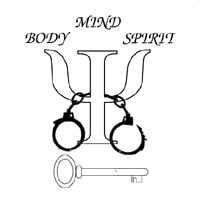When it comes to assessing for future at-risk behavior regarding drunk driving there is an inherent problem in the assessment process. Practically speaking, alcohol and drug use evaluations focus on past and current behaviors of alcohol and drug use. Current assessment tools include the Drug Abuse Screening Test, Michigan Alcohol Screening Test, Alcohol Use Disorder Identification Tool, Substance Abuse Subtle Screening Inventory-3, and Driver Risk Inventory, and many more. None of these assessment tools address the motivation for use.
In the State of New Hampshire, when a person drinks and drives, is caught, arrested and prosecuted, and found guilty, that person is required to attend an Impaired Driver Intervention Program (IDIP). Generally, these programs follow the dynamics of the Minnesota Model of programming which includes education upon the biopsychosocial effects of alcohol in conjunction with 12 Step participation. Upon completion, the participant is then referred to a Licensed Alcohol and Drug Counselor (LADC) for further evaluation and recommendation(s). The above assessments are then applied, the participant’s reoffending risk level is then rated and he or she is further provided recommendation(s) which are shared with the referring IDIP. Successful reinstatement of New Hampshire driving privileges is necessitated by the participant receiving a low risk rating by both the referring IDIP and referred LADC.
Currently, there are two inherent problems with this system of intervention. First, the participant generally has one motivation and that is to have his or her driving privileges reinstated. Second, assessment is on past and present behavior. Given these two points and considering the fact that all the above assessments are based upon self-reports, program compliance is the mitigating issue. In my twenty years of experience, I have never witnessed a person state: “I do not want to have my driver’s license returned to me because I have a drinking problem.” The outcome is quite the opposite. It is for this reason the most effective assessment process should include evaluation of the participant’s: 1.) propensity to disinhibit, 2.) impact of desensitization, and 3.) influences of social reinforcement. For example, a person has his or her license reinstated, after a period of time, the burden of past loss of license and finances will have little residual impact on that person (desensitization). As often the case, this individual finds him or herself in a social setting where alcohol is involved (social reinforcement). Not wanting to be anti-social, the involved is motivated to “fit in and have a good time.” Once alcohol is consumed, the biochemical substance (ethanol) interferes with logic, rational, and reason. Now the person who swore up and down he or she will never drink and drive again has to get home, and his or her car is parked out front. What do you think happens next?
Unfortunately, in order to be versed in assessing for the three outlined interpersonal risk factors, requires more than focus on the substance and behavior. Currently, this is beyond the scope of practice for most Licensed Alcohol Drug Counselors.
Peter Stone, MA,CPT,CART,CAS is a certified alcohol & drug addictions specialist with the American Academy of Health Care Providers in the Addictive Disorders, a nationally/internationally recognized credentialing organization developed by the Harvard School of Medicine – Division on Addictions.
Friday, February 12, 2010
I swear......
Subscribe to:
Post Comments (Atom)







No comments:
Post a Comment
If you should have any problems registering for this blog, please contact me directly: peterstone@MyDiscover.org